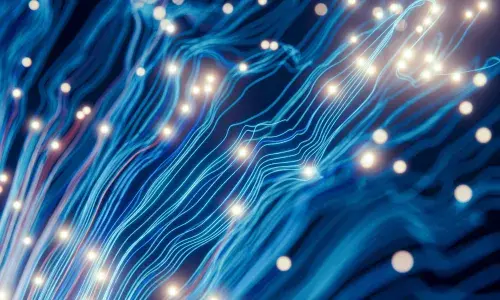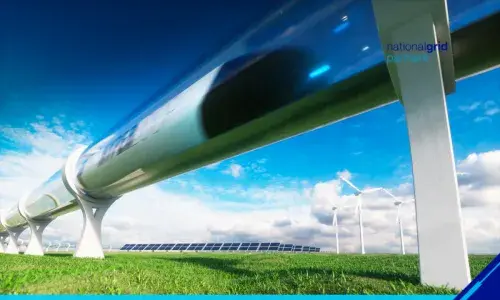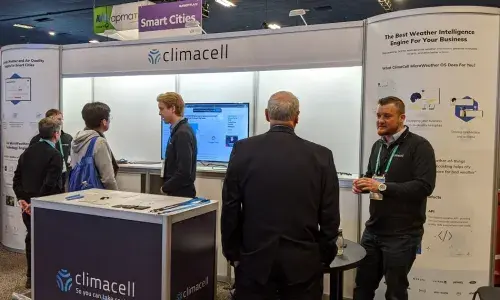
The negotiation of things
There’s been a lot of hype around the so-called “Internet of Things” and with good reason.
The massive volume of data being generated by industrial systems, vehicles, consumer goods, sensors in public spaces, and the like has tremendous potential value.
But data only has potential value. Actual value is realized in marketplaces where transactions occurs between buyers and sellers. And that value is agreed upon by the parties to each transaction, who use information to negotiate transaction pricing and terms.
National Grid’s interest in IoT is therefore not just about using the telemetry our own smart infrastructure can give us about our own operations—but how IoT data can more broadly be transformed into information that adds value to transactions across supply chains and market ecosystems, especially in the energy sector.
Distributed renewables and market complexity
The exploding availability of accurate, timely, and granular IoT data from participants in the energy ecosystem couldn’t have come at a better time. As the number of solar and wind generation sites grow, energy production is becoming more distributed and fragmented. So, while the growth in renewable energy sources is great for our planet, it also increases market complexity.
Utilities now have more sources from which they can purchase energy. They therefore have to make more dynamic decisions about where to purchase energy based on price, current and projected consumption levels, and targets for renewable sourcing.
The growing number of producers, on the other hand, want to maximize the dollars they get for putting supply on the grid—based on similar demand parameters.
For energy markets to function properly, these multi-dimensional supply and demand dynamics between buyers and sellers have to be processed in real time. Buyers and sellers also need ways to make reasonably accurate predictions about future market conditions in order to make fact-based operational and business decisions.
In other words, the constant stream of telemetric data “chatter” generated by IoT devices must be translated into actionable knowledge buyers and sellers can actually use to transact business in the marketplace.
Things talk, AI negotiates
The obvious way to transform massive volumes of raw IoT data into actionable market insight is with data science. Machine learning, AI, and other data science disciplines can process IoT inputs to provide energy buyers and sellers with clear multi-dimensional pictures of available supply at any given point in time—and reveal how that supply profile aligns with similarly multi-dimensional demand.
And that is the heart of the AutoGrid value proposition. As the dominant player in this sector, AutoGrid aggregates across the grid so that utilities can better manage their supply chains to meet the demands of their customers with the utmost economy and reliability. AutoGrid can also reach into business and residential customers’ individual environments through smart meters and thermostats to further help utilities shed peak workloads and most accurately plan for demand based on historical consumption data.
Human decision-makers, of course, are still often involved in buying and selling strategies. But by making about 10 million AI-driven predictions about market supply and demand every minute, AutoGrid gives those decision-makers the accurate, actionable insight they need into an increasingly complex and distributed energy marketplace. And someday AI may even be able to autonomously handle even more of the negotiation and energy arbitrage itself.
That’s why National Grid is an AutoGrid partner—and one reason why National Grid Partners has invested in AutoGrid.
Just the beginning
The energy industry is just beginning to understand and adopt AI in conjunction with IoT telemetry. And energy is just one of many industries that are embracing massive Ai-enhanced data streams as a tool for rationalizing markets and more efficiently delivering value to the customer.
So by engaging with AutoGrid, National Grid is doing more than just making a smart investment. We’re getting in on the ground floor of a wave of innovation that is dramatically impacting the global economy across industries. This early engagement puts us in a stronger position to participate in and leverage AI/IoT-related innovation wherever additional opportunities present themselves.
That participation means more than just healthy financial returns for National Grid Partners. It also means we can better fulfill our mission to rationalize markets for the good of the communities we serve and the planet on which we live. Decarbonization is a global imperative for humankind—but it won’t happen just by developing the right technologies. We also have to engineer a market environment in which those technologies are economically and politically viable. AI and IoT will clearly play a central role in making that happen.
Pradeep Tagare is Vice President of Corporate Venture Capital at National Grid Partners.


